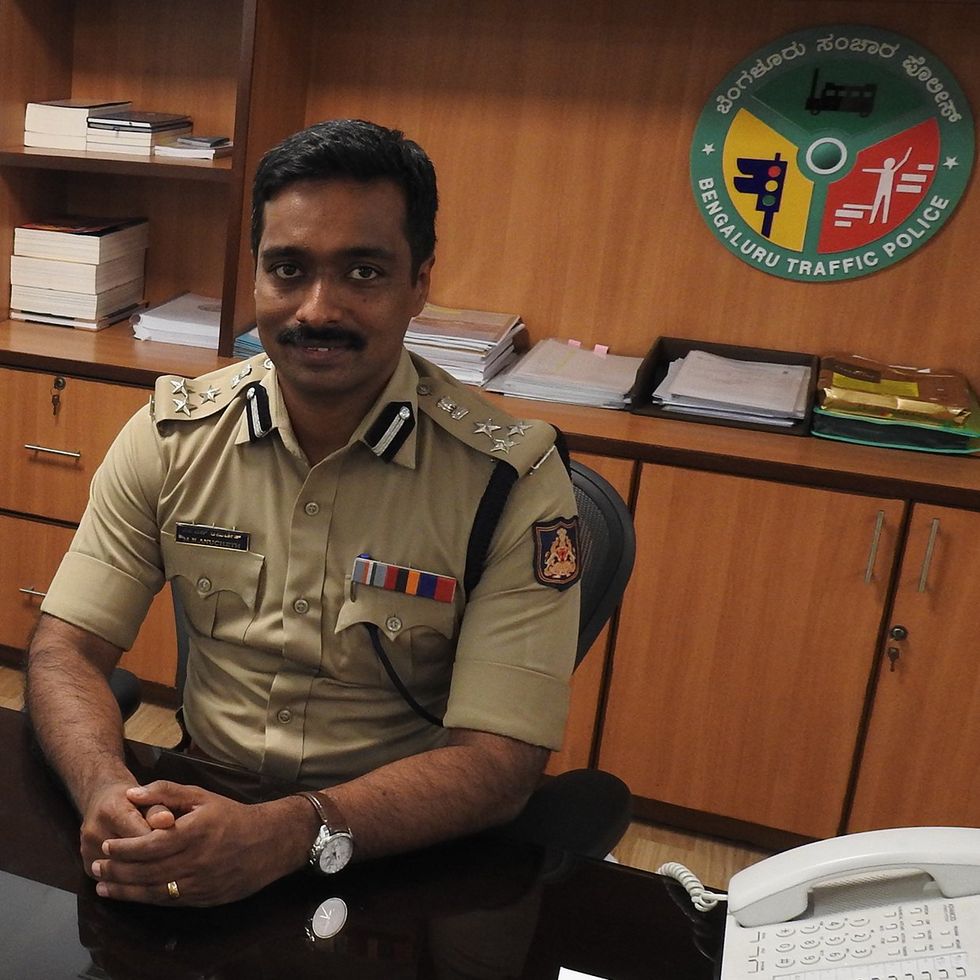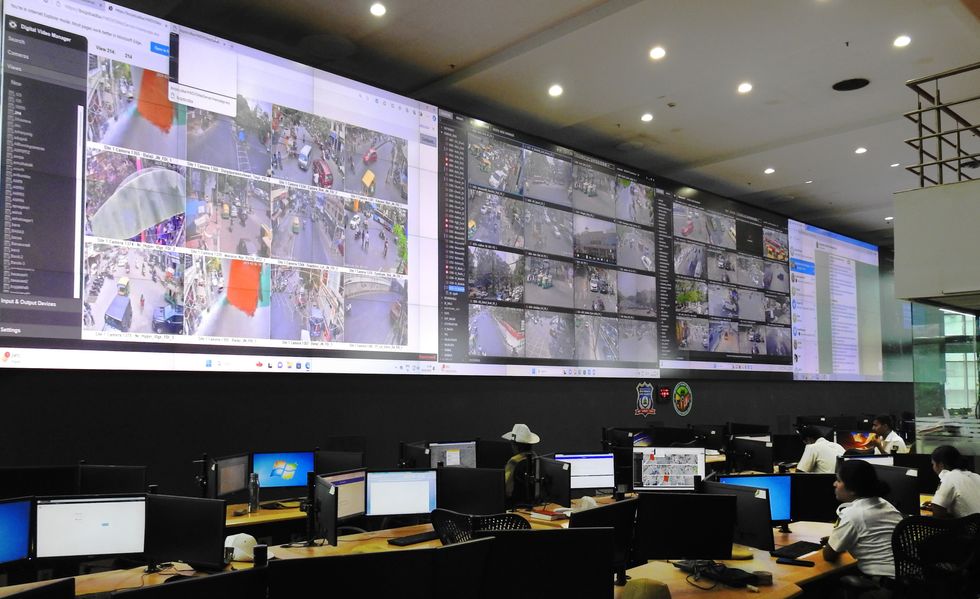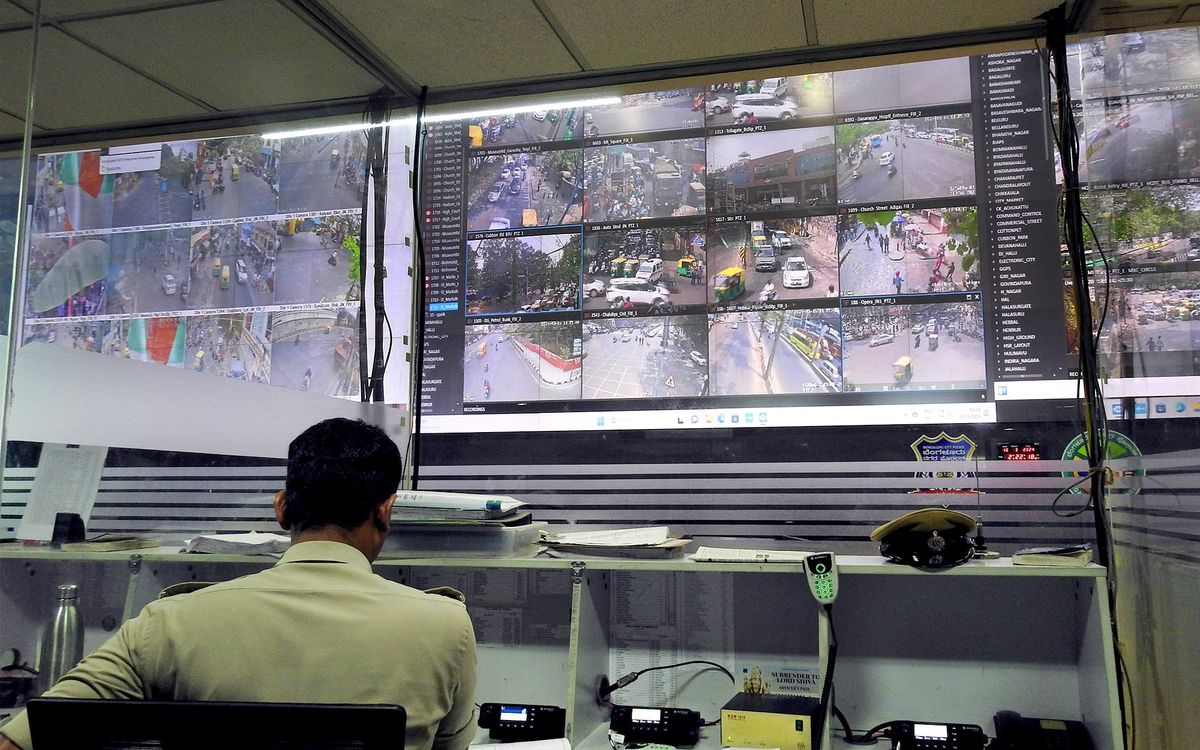In just 30 years, the South Indian city of Bengaluru has gone from a sleepy retirement town to the capital of the country’s burgeoning technology sector. But such rapid development has left it with some of the most congested roads in the world. Now, a former chip engineer has been drafted in to act as the city’s traffic czar, and he’s turning to artificial intelligence to tackle the problem.
Indian streets are disorderly at the best of times. Pedestrians, cyclists, hand-drawn carts, scooters, auto-rickshaws, and a menagerie of ramshackle goods vehicles of varying sizes and speeds all vie for space on roads that are often in poor condition, lacking sidewalks, and largely devoid of signage or markings.
But even in India, Bengaluru is renowned for its traffic problems. The city’s booming IT industry has caused the city’s population to skyrocket from roughly 4 million in 1990 to more than 14 million today. Infrastructure has failed to keep up, with limited road construction and a much-delayed metro rail system that still has only two operational lines despite work on the system beginning in 2007. The city has consistently ranked near the top of the list of the world’s most congested cities compiled each year by Dutch location technology firm TomTom—although it dropped from second place to sixth in 2023.
The last major piece of road building in Bengaluru was an outer ring road built 24 years ago.
“The infrastructure is growing, but it’s just not able to keep pace with the demand,” says joint commissioner of police for traffic, M.N. Anucheth, who grew up in the city and has now been given the unenviable task of getting its roads under control. The scale of that challenge becomes apparent on entering the city’s traffic management center, where a 20-foot high wall of screens provides a round-the-clock live feed of Bengaluru’s chaotic road network.
From Engineer to Top Cop

At just 40, Anucheth is young for a top cop, but eager to bring fresh ideas to the role. An engineer by training, he had a brief spell working in chip design before joining the police force. And he’s been pushing to make better use of technology—in particular AI—since his appointment in 2022.
“In traffic, there are a lot of tasks which are repetitive and easily reducible to an algorithmic kind of process, which AI is really good at,” Anucheth says. “The whole idea is to infuse our operations with technology and use it as a force multiplier.” That’s something Bengaluru, with 5,600 traffic police who have to keep an eye on more than 10 million vehicles across 13,000 kilometers of road, sorely needs.
The centerpiece of this new strategy is a traffic management system dubbed Actionable Intelligence for Sustainable Traffic Management, or ASTraM. The system, developed by Dutch engineering consultancy Arcadis, was launched in January and features multiple modules designed to help the police compile and make use of data more effectively.
At ASTraM’s heart is an AI-powered congestion modeling tool, which combines data from multiple mapping services including Bing Maps, Google Maps, and TomTom, along with specific road data such as width and condition to alert traffic cops about congestion hotspots. The tool can rate congestion on a severity scale, as well as make predictions about queue length and when the traffic buildup began, which help guide decisions about which areas to prioritize and how to deal with jams.
It’s a big improvement on the previous approach, says Anilkumar P. Grampurohit, the jovial inspector who heads the traffic management center. Before ASTraM, police used to rely on reports from people stuck in traffic and from the so-called “junction jockeys”—the police officers responsible for manning the manual controls at traffic signals. “Now, without anyone having to call in, we know where the congestion is, what time it started, how long the queue is, and what might be the remedy,” says Grampurohit.

ASTraM also includes a new incident logging app built on top of the messaging platform Telegram. It lets officers report everything from potholes to serious accidents via a simple chat interface that prompts them to provide important details, along with pictures and GPS location data. This not only gives officers in the control room clear information to help make decisions, says Venkata Chunduru, head of Arcadis’ India operations, it also helps record data in a consistent way so it can be analyzed later. An event management module is also used to log details of any gathering of more than 500 people, and Arcadis has been using traffic simulations to estimate their impact on nearby roads and help police with planning.
Additional AI Tools to Fix Bengaluru’s Traffic Woes
Arcadis is also developing a separate predictive AI model that can pull together all of this data and use it to forecast traffic conditions days in advance, though it will still be some time before this is deployed, says Chunduru. This system will also pull in anonymized data from local food delivery and ride sharing companies like Ola, Swiggy, and Zomato, as well as from 33 major tech parks around the city whose employees are significant contributors to congestion. Bengaluru’s police force also recently signed a deal with New Delhi-based Nayan AI for the latter to use the police’s network of 9,000 CCTV cameras to do automatic traffic counting and classification using computer vision, which would also be fed into ASTraM.
Chunduru is keen to point out that what they’ve built is not rocket science. “We are not trying to reinvent the wheel or discover something new, we are working on the basic principles of traffic management,” he says. And the suite of tools they’ve developed could easily be repurposed to work in any Indian city, or even farther afield. The Arcadis team has already received inquiries from local governments in the northern states of Punjab and Gujarat, and they are talking to colleagues within the company about whether the solution could be adopted in European cities.
“At the end of the day, the system should have integrity. If it’s not trusted, then there’s no acceptance by the public.” —M.N. Anucheth, Joint Commissioner of Police (Traffic)
However, ASTraM isn’t the first AI tool that Bengaluru’s traffic cops have deployed. Shortly after taking up his current role, Anucheth commissioned an automated traffic violation detection system. 50 specialized camera systems with embedded computer vision analyze video from across the city to spot infringements including running red lights, riding scooters without a helmet, or failing to buckle seatbelts. The cameras can also read a vehicle’s plate number, which is used to look up the rider’s details and automatically issue a fine.
The earlier system detects roughly 10,000 violations a day, which is a vast improvement over the roughly 1,200 that a dedicated team of 10 officers watching live video feeds previously achieved. But the program has also taught Anucheth the importance of keeping humans in the loop. For some offenses, error rates are as high as 15 percent, so each violation is checked manually by a human before a fine is issued. “We cannot leave everything to AI,” he says. “At the end of the day, the system should have integrity. If it’s not trusted, then there’s no acceptance by the public.”
Error rates haven’t put Anucheth off AI though. Following a successful pilot, he’s just commissioned the installation of new adaptive traffic lights at 165 junctions around the city. They will use computer vision to measure the length of queues at signals and adjust wait times accordingly. The system will be governed by control software specially adapted for Indian conditions by the government-run Center for Development of Advanced Computing and the police estimate it could lead to between a 14 percent and 22 percent reduction in travel times.
There’s Only So Much AI Can Do
The installation of this kind of intelligent transport system is to be welcomed, says R.K. Misra, a nonresident scholar at think tank Carnegie India who specializes in urban planning and transport. Misra, also the co-founder of electric scooter startup Yulu, says there’s only so much technology can do. The city simply has too little road for too many vehicles and a woefully under-developed public transport system, both of which he blames on poor planning by politicians.
The last major piece of road building in Bengaluru was an outer ring road built 24 years ago, Misra notes, and the metro is being developed so slowly it’s unlikely to have any significant impact for the next 10 or 15 years. Compounding the problem is the fact that the riches created by the IT boom have translated into the country’s highest per capita car ownership, further clogging up already crowded streets.
“The infrastructure is growing, but it’s just not able to keep pace with the demand.” —M.N. Anucheth, Joint Commissioner of Police (Traffic)
That’s a problem that’s not going away any time soon, says Ashish Verma, a professor of transportation systems engineering at the Indian Institute of Science in Bengaluru. The city currently has roughly 200 cars per 1,000 people, but that’s still a long way from the 600 to 800 seen in developed countries. “Anything that you try adding in terms of road infrastructure to accommodate more cars is getting filled in no time,” he says. “So it has created a vicious circle of congestion in the city.”
Intelligent traffic systems will have limited impact, Verma says, because you can’t manage traffic when every road and junction is already at saturation. First there needs to be a concerted effort to reduce the number of cars on the road, which involves not only investing in public transport, but also better integrating different services like buses and the metro to make it more attractive to citizens.
Anucheth agrees. He says the city’s infrastructure is 80 percent of the problem. But at the end of the day he’s just trying to make an impact where he can, and his goals are modest. “If you can go home five minutes faster over two or three days, you will actually start to feel it,” he says. “I don’t have a say in infrastructure. I don’t have a say in policy or planning. What I do have control over is how I manage traffic, and within my limited sphere I am doing my best.”
Edd Gent is a freelance science and technology writer based in Bengaluru, India. His writing focuses on emerging technologies across computing, engineering, energy and bioscience. He's on Twitter at @EddytheGent and email at edd dot gent at outlook dot com. His PGP fingerprint is ABB8 6BB3 3E69 C4A7 EC91 611B 5C12 193D 5DFC C01B. His public key is here. DM for Signal info.



